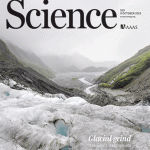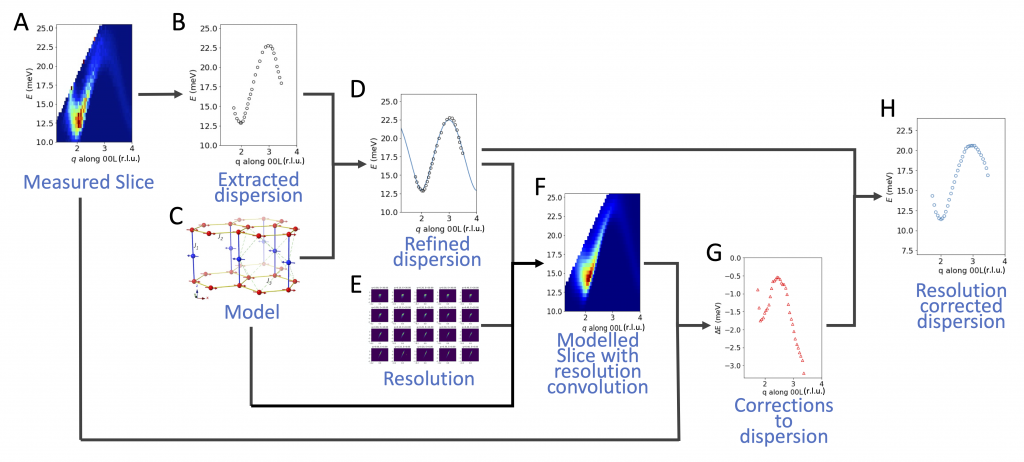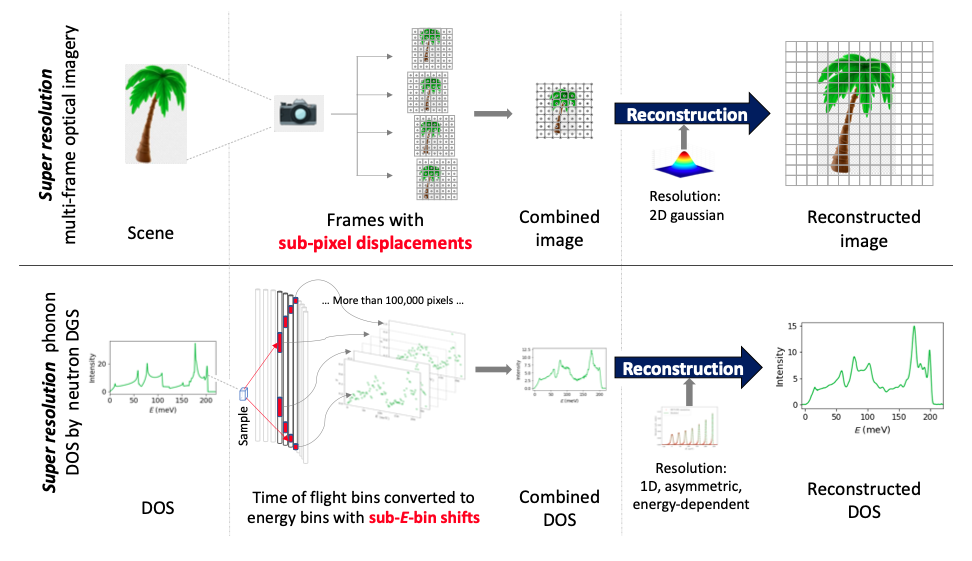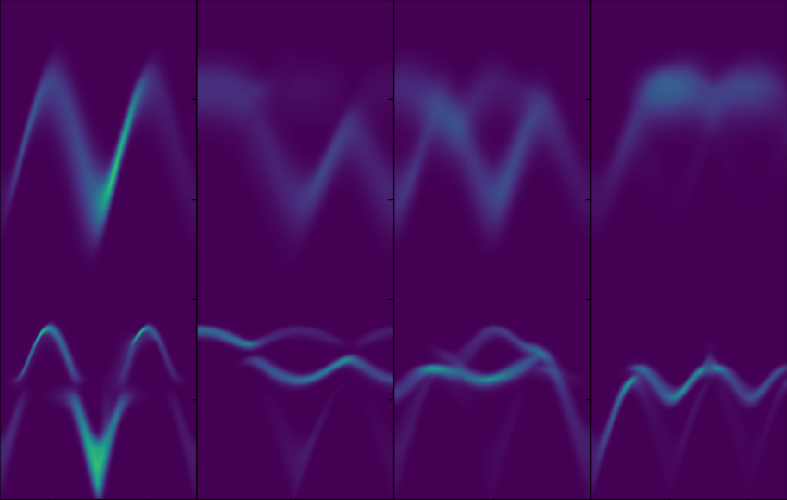Application of super resolution imagery techniques in neutron scattering data

- Super resolution spin-wave dispersion. ORNL media: https://neutrons.ornl.gov/content/no-cost-way-improve-neutron-scattering-resolution-500 Published: https://aip.scitation.org/doi/10.1063/5.0079031 Preprint: https://linjiao.info/wp-content/uploads/2022/01/SRDispersion_RSI.pdf.
- Super resolution phonon Density of States from the ARCS instrument, a neutron Direct Geometry Chopper Spectrometer. Published: https://doi.org/10.1063/1.5116147 Preprint: https://arxiv.org/abs/1906.09482
Neutron spectroscopy started by Brockhouse (The Nobel Prize in Physics 1994) is the tool of choice for studying exotic excitations in solids (e.g. Dennis Kim et al. 2018 PNAS, Hillary Smith et al. 2017 Nature Physics, Arnab Banerjee et al. 2017 Science, Michael Manley et al. 2019 Nature Communications). Clearly resolving fine features in the excitation spectra of novel materials is a long-standing challenge that pushes the limit of direct- geometry neutron chopper spectrometers (DGS), instruments to observe the reciprocal space. Only a few such facility-scale instruments exist in the world. They produce massive datasets, but excitations are obscured by asymmetric, varying blurs caused by the instrument.

Super-resolution techniques have revolutionized scientific fields such as fluorescence microscopy and biology (The Nobel Prize in Chemistry 2014), and new SR techniques continue to be invented for microscopy (e.g. Taehwan Kim et al. 2019 Nature Communications; Ron Tenne et al. 2019 Nature Photonics; Raphaël Turcotte et al. 2019 PNAS; Bin Yang et al. 2019 Nature Methods). More generally, sub-pixel enhancements in optical imagery for real-space observation are making significant contributions to science (e.g. Frederic Herman et al., Erosion by an Alpine glacier, Science 350(6257) 2015).

This work demonstrated for the first time that the disparity calculation techniques developed in stereo vision can be applied to single crystal inelastic neutron scattering data to obtain super-resolution dispersion curves.

The corrected dispersion can then be fitted to the dispersion model to obtain more precise physical models of the system. This technique is much more efficient than optimizing model parameters by minimizing a cost function that compares modeled slice intensities convolved by resolution to the experimental slice intensities directly (we call it brute-force optimization). For a brute-force optimization, each call to the cost function involves a resolution convolution calculation that takes a long time. A brute-force optimization usually involves tens to thousands of cost function evaluation, if not more. Our super-resolution technique only requires one resolution convolution. Furthermore, due to the noise in the experimental data, the landscape of the cost function in the brute-force optimization can be bumpy and an optimal solution may not be found by an optimization algorithm.
The previous work demonstrated for the first time that some super-resolution techniques for real-space optical imaging can be adapted to enhance resolution in reciprocal measurement of neutron spectra. 5X resolution enhancement was achieved on a phonon DOS measurement using the ARCS chopper spectrometer through multi-frame super-resolution.

